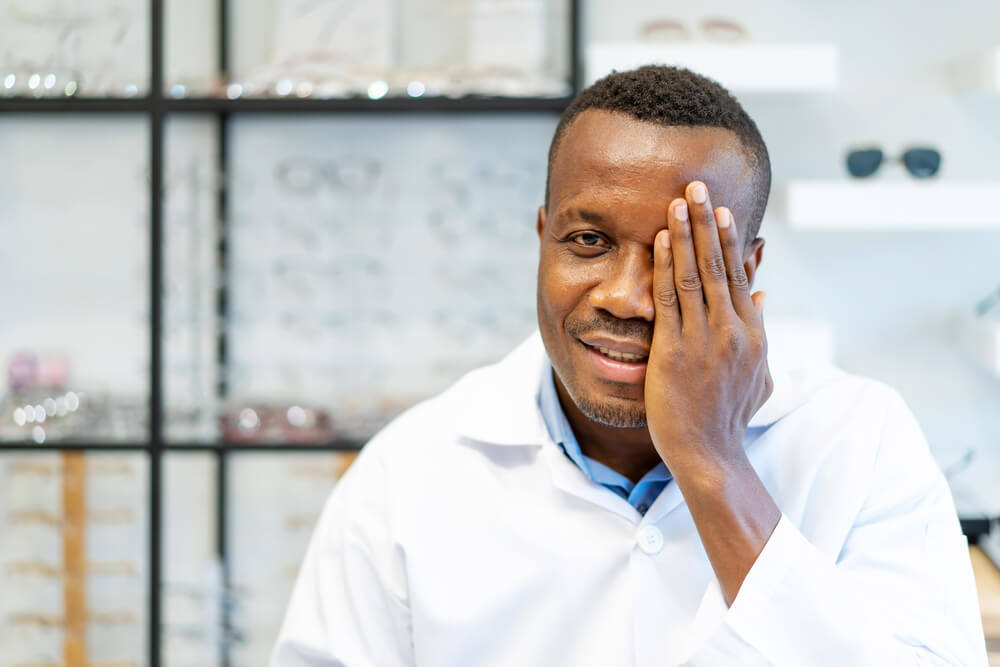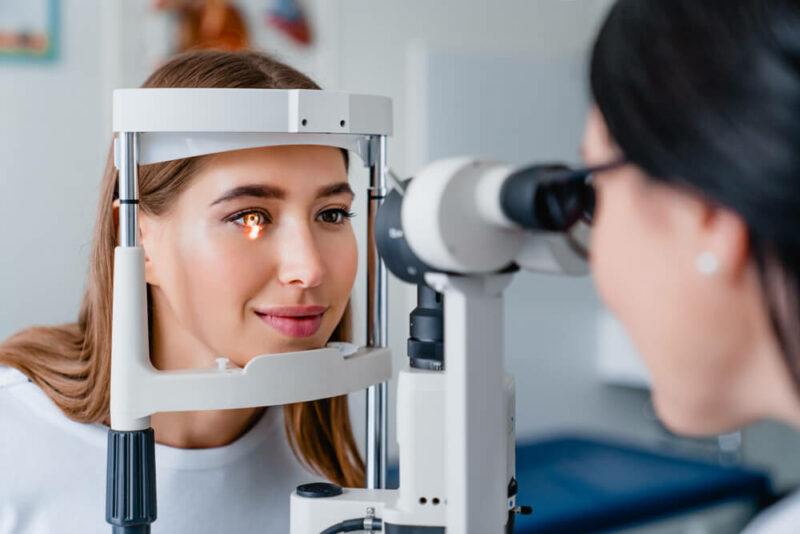Eye and Retina Exam

What to Expect During Your Eye Exam
Annual eye exams are essential in protecting your vision and health. Before the actual exam your ophthalmologist will ask you a few questions about your vision history. If you currently wear contacts or glasses, it is a good idea to bring them to your appointment.
During your comprehensive eye exam, a series of tests are performed to assess your vision and the overall health of your eyes. The entire process takes anywhere from twenty minutes to over an hour, depending on your eye doctor and the procedures that must be done to fully assess your vision. Here are some of the tests that you will likely encounter:
Visual Acuity
Most people are familiar with the Snellen letter chart, which is used to check the sharpness of your vision. Your ophthalmologist will have you read letters of varying sizes from the chart to determine how well you can see them from across the room. To test your near vision, a smaller, hand-held chart is used.
Cover Test
This simple test is used to see how well your eyes work together. Your ophthalmologist will have you focus on a small object across the room, then alternately cover each eye. Then he will do the test again, but have you look at something closer.
Color Blindness Test
Usually performed during your initial exam, this test will rule out color blindness. Although color blindness can be hereditary, the test can help your eye doctor rule out certain eye health problems.
Retinoscopy
During this test, the lights will be dimmed and your ophthalmologist will shine a light in each eye as you fixate on a large target. He or she will use a machine to flip different lenses in front of your eyes and observe how the light reflects from your eyes. This will give your eye doctor a “rough estimate” of what your eyeglass prescription should be.
Refraction
This procedure is similar to retinoscopy, except here your eye doctor will ask you which lenses are clearer as different ones are placed in front of each eye. Your answers will help him or her refine the lens power and ultimately determine your final eyeglass prescription.
Slit-Lamp Examination
The slit lamp is a microscope that enables your ophthalmologist to look closely at both the external and internal structures of your eyes. He or she will have you place your chin on the chin rest, then shine the lamp’s light into your eye. This highly magnified view will reveal signs of infection or disease.
Aside from these procedures, your eye doctor may recommend that more specialized tests be performed. If you have any questions regarding your eye exam, please do not hesitate to contact us.
Retina Exam

The function of the eye’s retina can be compared to film in a camera – it sends light rays and raw sensory information to the brain via the optic nerve. These electric signals are then translated into vibrant and colorful images, or what we call “sight.”
The retinal membrane covers the inside of the back of the eye. In it are light-sensitive nerve cells called rods, and cones, which discern both light and color. Damage or disease in the retina can lead to impaired vision and in some cases, blindness.
Although your primary eye doctor can detect signs of retina disorders, most people are referred to a retina specialist. These doctors are specially trained to test for and treat retinal disease or injury. Early detection is critical because it can be difficult to repair the retina once it has been damaged.
What to Expect
First your retina specialist will take your medical history and create your patient record. It is a good idea to bring a list of any medications you are currently taking. You should also bring a pair of sunglasses, since you will have your eyes dilated. We also recommend that you have someone drive you to your appointment, because the pupil dilation will make it hard for you to focus and affect your ability to drive.
During the actual exam, your doctor will conduct a few different tests. The length of the appointment is typically 2-3 hours. Some of the diagnostic tests performed include the following:
- Indirect Ophthalmoscopy: This gives your doctor a comprehensive view of the internal structures of your eyes. A small handheld lens and a light attached to a headband are used to examine the inside of your eye and get a peripheral view of the retina.
- Visual Field Testing: During this test, you will be asked to focus on a point straight ahead. Then, flashes of light are displayed on a screen and you press a button whenever you see one of the flashes. A computer records the results, constructing a virtual map of your visual field. Your doctor will look for “blind spots,” which are a potential sign of retinal disease.
- Ultrasound: A-scan and B-scan ultrasounds are helpful diagnostic tools that provide a 2-D cross-sectional view of the eye. The test is quick and painless, using high frequency sound waves to produce a topographical view of the inner eye structures.
- Fluorescein Angiography: This test allows your doctor to evaluate the blood vessels in the retina. During the test, a vegetable-based dye is injected into your arm. Once it reaches the vessels in the eyes, it will glow in visible light and images will be recorded. Certain eye disorders cause poor retinal circulation, which this test can help detect.
- Fundus Photography: Before this procedure, your pupils are dilated to prevent them from constricting. A special camera mounted to a microscope is used to capture images of the eye’s internal structures. While the pictures are being taken, you will see a series of bright flashes. These images help document any retinal abnormalities, as well as monitor treatment. The entire process takes five to ten minutes.
After the Exam
Following your retina exam, your doctor will discuss the results with you. He or she will determine if further testing is necessary, or if a diagnosis has been established. After explaining your treatment options, your doctor will address any questions you may have and make recommendations for future care.
Early detection and comprehensive care are vital to your optical health, and we are dedicated to providing both for our patients. If you live in or around Olympia Fields please do not hesitate to call us if you have any questions about your retina exam.
